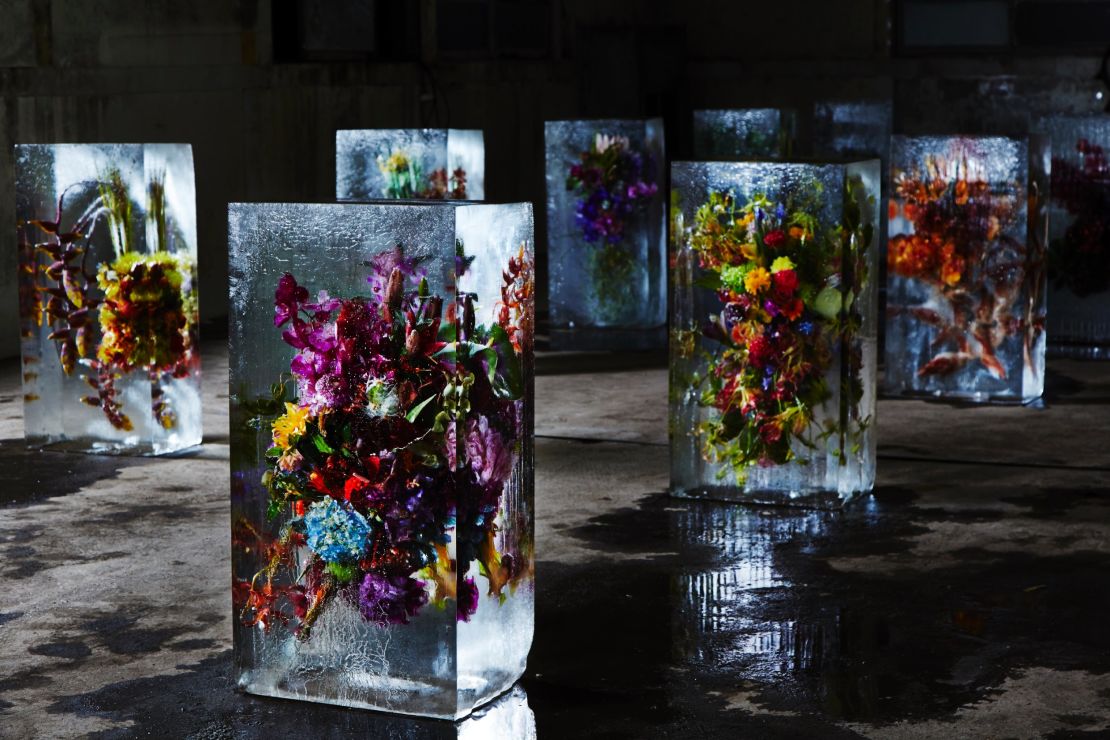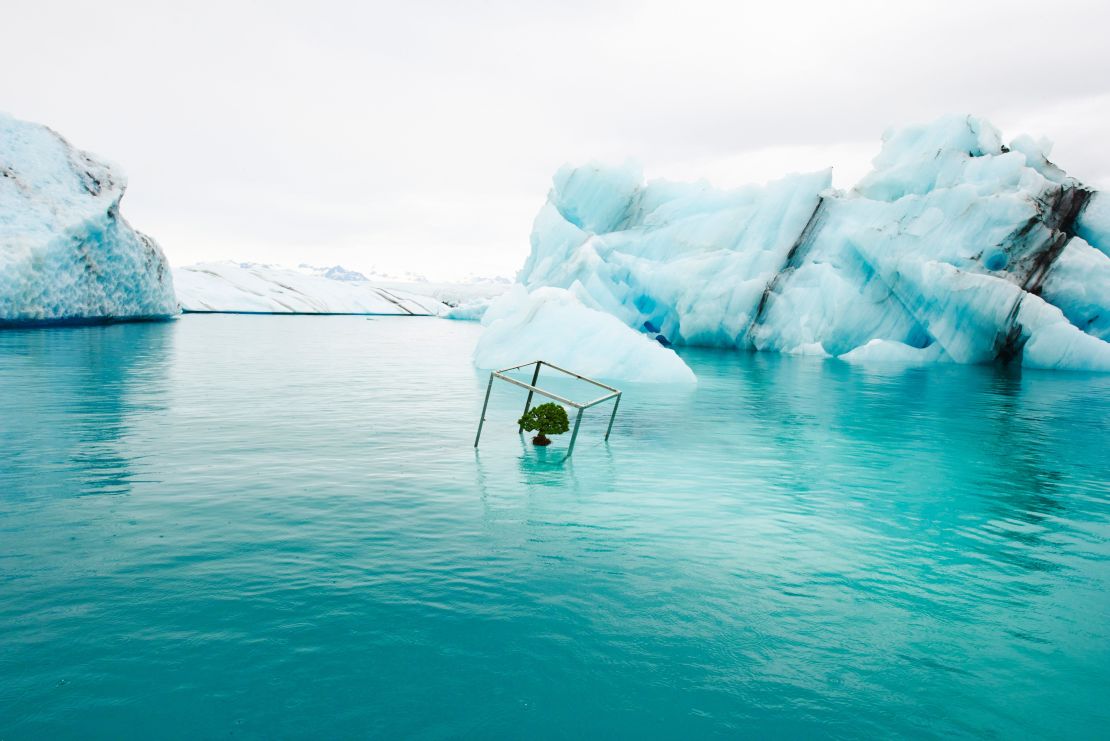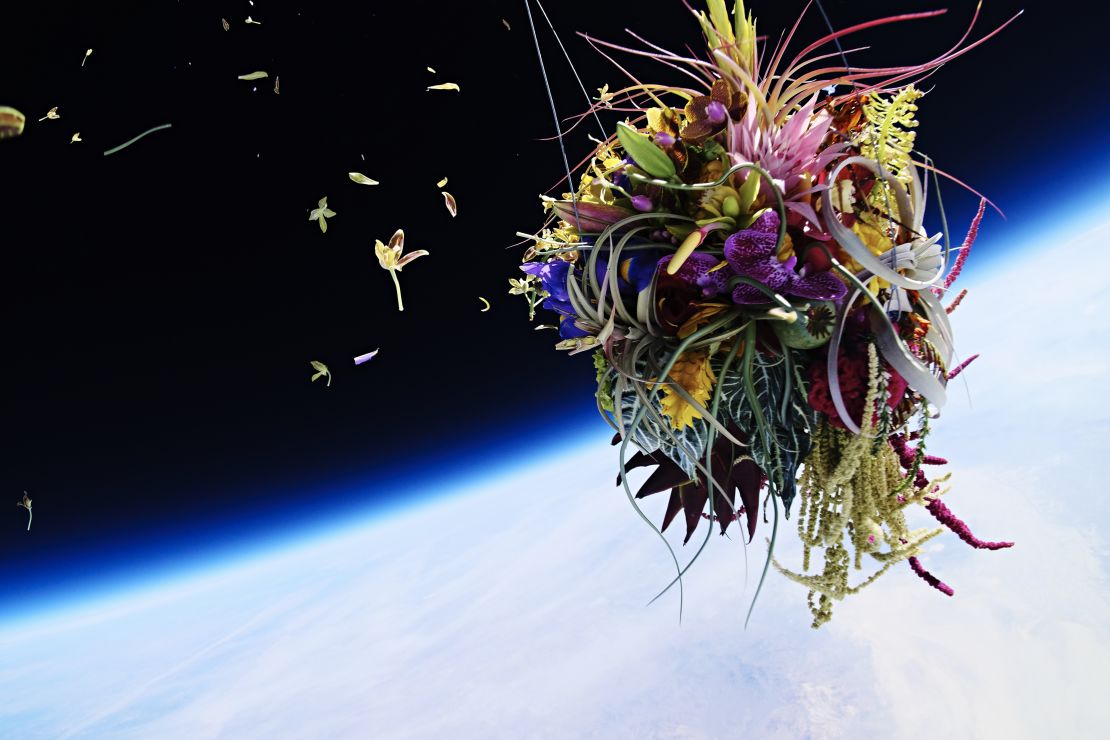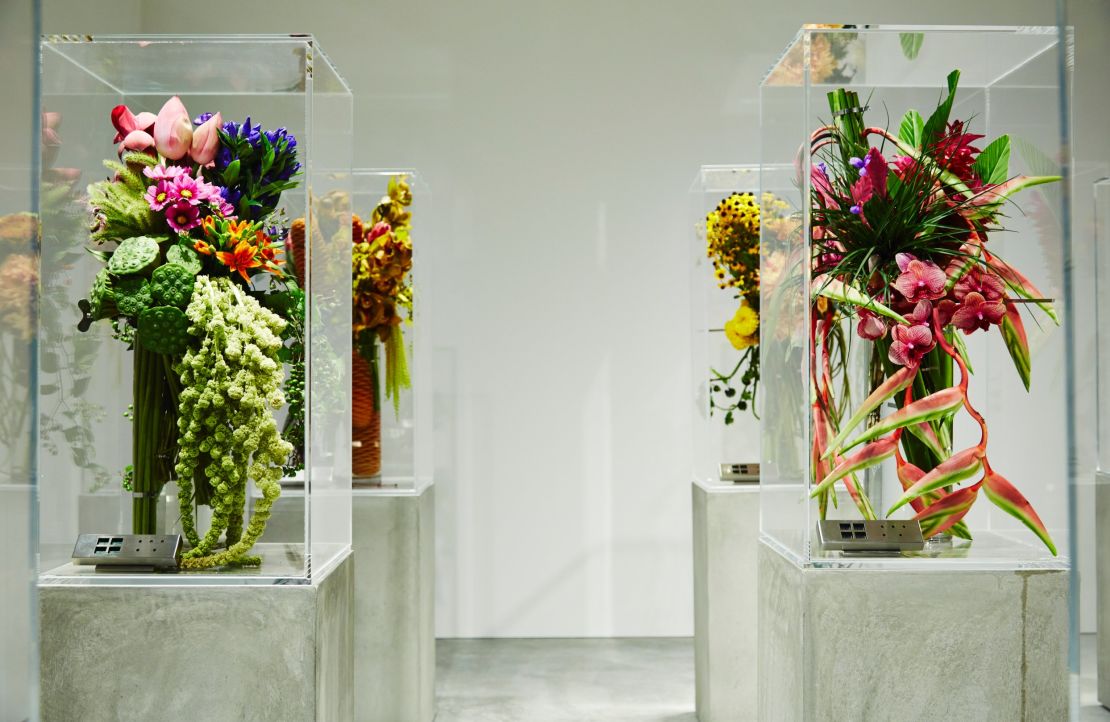Story highlights
Japanese artist Makoto Azuma fuses flowers and fungi with metals and technology to create unique artworks
Azuma tells CNN Style about his ongoing quest to find new beauty in flowers and why he sent a bonsai into space
From flowers locked in ice to space-age pine trees, Japanese artist Makoto Azuma has built a career from a “new genre of art” that blends plants with artificial mediums to strikingly beautiful effect.
A florist by training, the Tokyo-based Azuma creates what he describes as “living art” – ecosystems using fish and bonsai, bicycles covered in astroturf and spectacular fungi dipped in gold, platinum and copper.
For one of his best known series, “Exobiotanica”, Azuma sent a 50-year-old Japanese white pine bonsai and an extravagant mother’s day bouquet 30,000 meters into the atmosphere and photographed his unusual satellites suspended against the edge of the earth.
“Many misunderstand me as a contemporary artist, or drawer, or sculptor, he says. “But I create living art. I am creating a totally new way of expression.”
CNN Style spoke to Azuma about the inspiration behind his work, his relationship with flowers and the technical challenges of transforming life into art.
Do you see yourself as an artist or a florist?
I think I am a florist to begin with. But I create my art work in order to find out new value and potential in flowers. So I am a florist as well as an artist. Both are important for me.

What was your first memory of flowers or plants when you were a child?
I grew up in the countryside, in a place called Fukuoka on the island of Kyushu (Japan’s third largest island, southwest of the main island of Honshu). My house had a large garden, surrounded by rich nature. Every morning my mother cut flowers from the garden and put arrangements at the house entrance. I was very close with nature growing up.
When did you realize you wanted to work with natural materials to create art?
While I was running a flower shop, putting together bouquets and decoration, I thought I could find a new type of flower by applying a new expression on the flowers themselves. Besides merely making bouquets as presents or table top decoration, I thought it would be possible to capture the beauty in a photograph or video while the flower is changing its shape. It is like slicing out a moment for keeping the beauty eternal.
What is it about this medium that attracts you more than other art forms?
I believe flowers are the best art creation of nature. A human being can never make flowers. A flowers’ life is short but I scoop up the beauty of them by fixating it through various methods or letting them wither. The most attractive part of a flower is that it shows a life being withered and lost in shape, but revived again in a new shape.
What do you want to express most through flowers?
I would like to change the shape of flowers in a way no one has ever imagined before, or put the flower in an extreme environment. Sending flowers into space, or putting them in the deep sea – which I am doing now. What kind of expression do flowers show in such an environment? I embrace the quest through the experimental methods I use.

What are some of the main challenges of working with flowers?
it is a race against time. They say flowers age 10 years in one day. If I take three days for production, I would lose much of what I wanted to show. I must prepare fully and have a clear final vision in mind before starting the work. Flowers do not wait for humans.
It took you around six months to prepare for Exobiotanica, one of your most extreme and perhaps best-known projects. Can you tell us a bit about this work?
(Creating) Exobiotanica was a fight against a temperature of minus 60 degree Celsius (-76 degrees Fahrenheit). It is more to show the flowers’ beauty, even in a frozen state or even when they are shattered, rather than how to bloom beautifully. It (the art) went into space, so the body had to be chunky and the structure well cemented. Making just an art object was not a goal at all. I needed to choose flowers that can complete to form a good contrast in space. The piece also needed to have movement and strength.

Which of your other past projects do you consider to be your most ambitious?
I have no work that I can call ambitious. Since last month, we are opening up flower shops titled “hope” everywhere in the world using guerrilla tactics, just giving flowers to the people. We did it in Congo, then Algeria. The world is filled with conflict nowadays, smelling of gun power everywhere. We wonder what we can do with flowers for the world, not politically, but more simply. This is probably not so ambitious, but something that we want to continue for long time, in a steady, small scale.
Are there other artists that you look to or take inspiration from?
I do not look to any particular person as I did not start flower art after being influenced by someone. It is flowers and nature that inspires me. Flowers are indispensable…they are something very close to me all the time.
You have created a very unique studio in Tokyo, Jardin des Fleurs – can you tell us about it?
My shop is located underground and, simply put, is like a wine cellar. The temperature is kept on the same level year round so that the flowers bloom in the best condition. We also use special LED lights to show the flowers at their best.
Flowers do not bloom beautifully under full sun light so we manage an intricate balance of light, temperature and humidity and add a bit of artificial lighting so that the flowers perform at their best.

What is the most surprising thing you have learned about plants and flowers to date?
Flowers have a very strong existence. A human needs flowers and plants to live, but flowers and plants do not need humans. They are so strong.
This interview has been edited for clarity.















